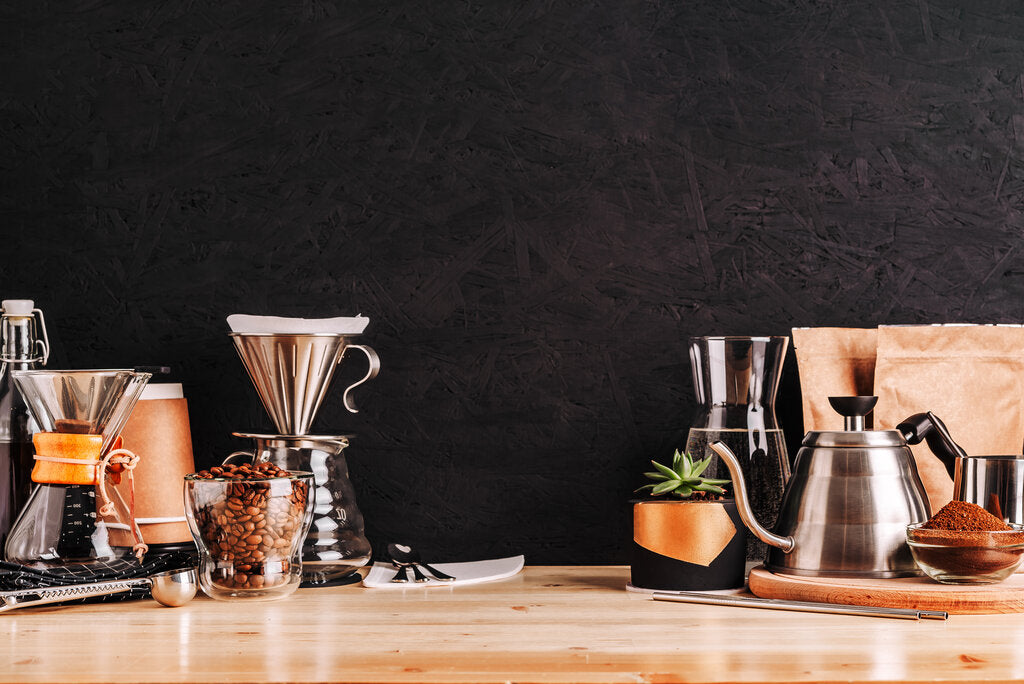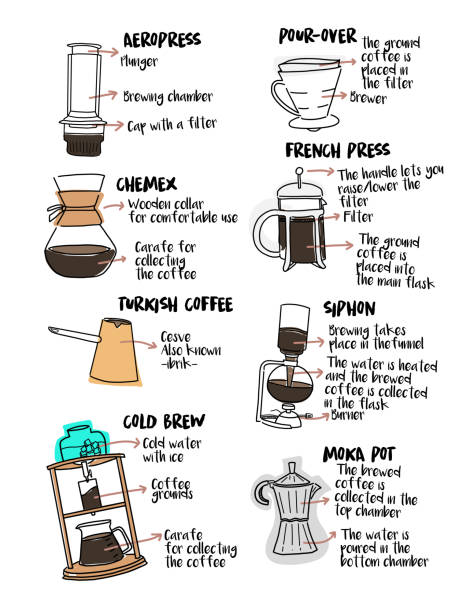Understanding Coffee Brewing Methods: Essential Techniques for Every Coffee Lover
Understanding Coffee Brewing Methods: Essential Techniques for Every Coffee Lover
Blog Article
The Scientific Research Behind Coffee Developing: How Temperature and Time Affect Your Drink
Recognizing the scientific research behind coffee brewing discloses that temperature level and time are not simple variables but essential aspects that dictate the beverage's taste account and general high quality. The ideal brewing temperature generally falls in between 195 ° F and 205 ° F, while the period of extraction varies significantly throughout various techniques. This interplay of factors can cause a mug that is either disappointing or fascinating. As we check out the nuances of these elements, the inquiry develops: how can one properly equilibrium temperature and time to attain that best brew?
The Chemistry of Coffee Extraction
The chemistry of coffee removal looks into the elaborate procedures that transform raw coffee beans right into the aromatic beverage enjoyed worldwide. This change largely includes the solubility of numerous compounds existing in the beans, which are affected by factors such as work dimension, water top quality, and the brewing technique utilized.
During the brewing process, warm water works as a solvent, removing soluble compounds, consisting of high levels of caffeine, sugars, lipids, and acids, from the coffee premises. Each substance adds to the taste profile, scent, and body of the last drink. Acids are accountable for brilliant and zesty notes, while oils contribute to an abundant mouthfeel.
The removal procedure is not consistent; different compounds dissolve at different rates. The preliminary phases of developing remove acids and sugars, leading to an enjoyable acidity, while long term removal can lead to bitterness due to over-extraction of undesirable compounds. Comprehending these chemical interactions is vital for maximizing developing strategies, as the equilibrium in between removal time and water temperature can substantially influence the general high quality of the coffee. Eventually, grasping the chemistry of coffee extraction is key to achieving a flavorful and well-rounded cup.
Suitable Brewing Temperatures
Finding the best brewing temperature level is vital for unlocking the complete capacity of coffee flavors and fragrances - coffee brewing methods. Research study indicates that the optimum variety for brewing coffee exists between 195 ° F to 205 ° F(90 ° C to 96 ° C) Within this array, the extraction process successfully dissolves the preferable soluble compounds in coffee beans, leading to a well balanced and tasty cup
Developing at lower temperature levels, such as below 195 ° F(90 ° C ), might result in under-extraction, producing a weak and acidic mixture with muted tastes. Conversely, developing at temperatures surpassing 205 ° F(96 ° C) can lead to over-extraction, generating a rough and bitter taste as a result of the excessive dissolution of unwanted compounds, such as tannins.
Additionally, the ideal developing temperature level can vary depending upon the coffee bean kind and roast level. As an example, lighter roasts often take advantage of a little higher temperatures to boost their complex flavor accounts, while darker roasts might be better fit to reduced temperatures to alleviate anger.
Eventually, preserving accuracy in developing temperature levels is critical for attaining an unified equilibrium of tastes, making certain that every mug of coffee supplies a satisfying sensory experience.
Impact of Developing Time
Developing time plays a crucial function in identifying the taste account and overall quality of coffee. Much shorter brewing times can result in under-extraction, leading to a weak or sour taste, as not enough soluble substances are dissolved.
Optimal developing time varies relying on the technique used and the work size of the coffee. A French read this article press usually page requires regarding four minutes, while coffee extraction is usually completed within 25 to 30 secs. It is vital to calibrate brewing time in combination with various other variables, such as water temperature and coffee-to-water proportion, to accomplish the preferred taste account.
Understanding the effect of developing time makes it possible for coffee enthusiasts to refine their developing methods, ultimately boosting the sensory experience of their cup (coffee brewing methods). With cautious focus to this variable, one can unlock the complete potential of the coffee, exposing its one-of-a-kind attributes and subtleties
Brewing Techniques and Their Results

As an example, methods like French press and cold brew permit a longer steeping time, leading to a fuller body and robust flavor because of boosted removal of oils and soluble solids. On the other hand, coffee developing uses high stress and a much shorter removal time, generating a focused shot that highlights extreme flavors and a rich crema.
Pour-over methods, such as Chemex or V60, provide a more controlled extraction procedure, permitting the maker to adjust circulation rate and water distribution, which can enhance brightness and clarity. Meanwhile, percolation approaches cycle water via the coffee our website premises several times, causing a stronger, typically bitter flavor.
Last but not least, making use of paper filters versus metal filters can additionally influence the final taste; paper filters generally yield a cleaner mug by trapping oils and fine fragments, while steel filters allow even more oils to travel through, adding to a fuller mouthfeel - coffee brewing methods. Recognizing these subtleties can elevate the coffee experience significantly
Tips for Developing Your Mixture
A well-executed brew can change also the simplest coffee right into an impressive experience. To accomplish this, attention to information is vital. Start with high-quality, newly roasted beans, as their taste profile lessens gradually. Grind the beans right before brewing to maximize quality, ensuring the work size matches your brewing method-- coarser for French press and finer for espresso.
Water quality plays a crucial function; usage filtered water devoid of contaminations. The perfect developing temperature level ranges in between 195 ° F and 205 ° F(90 ° C to 96 ° C ) Also hot can burn the coffee, while also awesome might under-extract tastes.
Timing is just as essential. For immersion techniques, soaking for three to five minutes is ideal, whereas drip approaches generally take about 5 mins. Experiment with brew times to discover your recommended toughness.

Conclusion
In recap, the complex connection between temperature level and time is vital in the coffee brewing procedure. Recognizing these scientific concepts equips individuals to improve their developing techniques, inevitably leading to a much more pleasurable and well balanced coffee experience.
Recognizing the science behind coffee brewing exposes that temperature and time are not plain variables but crucial aspects that dictate the drink's flavor account and overall high quality. Understanding these chemical communications is important for maximizing brewing strategies, as the balance in between extraction time and water temperature level can considerably affect the overall high quality of the coffee.Brewing time plays an essential function in determining the taste account and total high quality of coffee. By focusing on these aspects-- bean top quality, grind size, water temperature, steeping time, and ratio-- you can raise your coffee developing process, resulting in a constantly superior cup.
In recap, the intricate connection in between temperature and time is critical in the coffee developing procedure.
Report this page